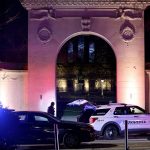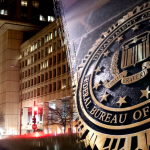The United States struck three Iranian nuclear development sites on Saturday. President Donald Trump said the U.S. targeted the Fordow Fuel Enrichment Plant, the Natanz Nuclear Facility, and the Isfahan Nuclear Technology Center.
The three sites were struck between 6:40 p.m. and 7:05 p.m. Eastern time. The attack included the use of bunker-buster bombs dropped by B-2 strategic bombers and submarine-launched Tomahawk missiles.
Trump said the bombings, called Operation Midnight Hammer, were a “spectacular military success” and that the targets were “completely and totally obliterated.”
As the consequences of the strike are still being learned, here is everything you need to know about these sites and what is left of the Iranian nuclear program.
History of the Iranian nuclear program
Iran was a signatory to the Nuclear Non-Proliferation Treaty in 1968. Despite this agreement not to seek nuclear weapons in the future, the country began work on secretly developing nuclear weapons after the 1979 revolution.
An Iranian opposition group uncovered secret nuclear sites in 2002. Iran claimed that these sites were for civilian use. In 2003, Iran agreed to halt enrichment programs before restarting its enrichment efforts in 2005.
In 2009, the secret Fordow nuclear site was discovered. In 2015, the Obama administration signed the Joint Comprehensive Plan of Action with Iran. Iran pledged not to develop weapons-grade uranium and to allow greater international monitoring of its nuclear sites.
The Trump administration pulled the U.S. out of the JCPOA in 2018. Iran restarted its nuclear program and began enriching uranium.
Fordow Fuel Enrichment Plant
The Fordow site, 60 miles southwest of Tehran, is the most critical site of the Iranian nuclear program. Constructed in 2006, its discovery in 2009 was a shock to the world.
It was designed to be resistant to airstrikes, constructed beneath a mountain and surrounded by large concrete walls. The site is about 54,000 square feet and possesses 3,000 centrifuges used for the enrichment of uranium.
The International Atomic Energy Agency conducted an unannounced inspection of the facility in January 2023. The inspection found that uranium had been enriched to 60% purity at the site, in violation of the NNPT. From 60%, it would not take much time for Iran to develop weapons-grade uranium at 90% purity.
Natanz Nuclear Facility
The Natanz facility, 135 miles southeast of Tehran, is the largest site in the Iranian nuclear program. Its discovery in 2002 unmasked the Iranian nuclear program to the world. The facility possesses both an aboveground plant and an underground enrichment facility.
The Natanz site was built to house 50,000 centrifuges. Before the conflict with Israel, Iran installed roughly 16,000 centrifuges in the facility.
Israeli strikes had destroyed the above-ground facilities during the strikes earlier in June. The IAEA reported that these attacks damaged the electrical infrastructure, inhibiting the operation of the plant for the moment.
Isfahan Nuclear Technology
The Isfahan site, 215 miles southeast of Tehran, was built with Chinese assistance in 1984. It is Iran’s largest nuclear research complex and employs around 3,000 scientists.
Two Israeli airstrikes had already hit the Isfahan facility before Saturday’s strike by the U.S. Some reporting indicates that near-weapons-grade nuclear fuel was likely stored at the site.
What’s left of the nuclear program after the strikes?
Vice President JD Vance said the Iranian nuclear program was set back “substantially” by Saturday’s strike. When asked about the status of the Iranian nuclear fuel already enriched to 60% purity, Vance responded, “That is one of the things that we are going to have conversations with the Iranians about.”
Experts are in general agreement that the three nuclear sites suffered extensive damage. However, how much damage and how long these sites would take to rebuild remains unknown.
How the US bunker-buster bomb works
The location and status of the already enriched nuclear fuel are also unknown. Cargo trucks were reported to have been outside the Fordow site before the strike on Saturday. The IAEA chief said Sunday that “Iran has made no secret that they have protected this material.”
Overall, the extent of the damage to the nuclear sites and the Iranian nuclear program as a whole is still undetermined.























